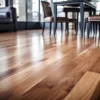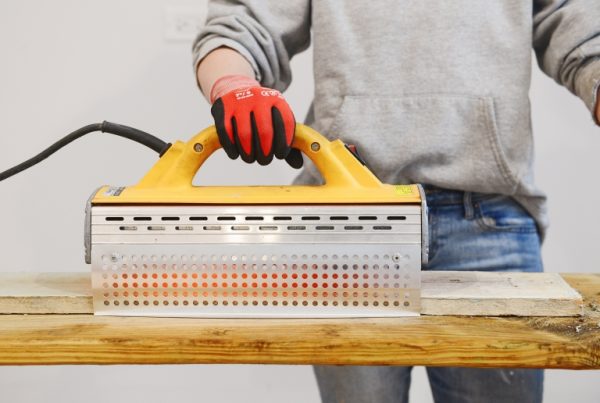There are many methods of stripping paint from wood surfaces, and each has it’s own set of issues. When choosing a paint stripping method, it’s important to be mindful of the problems that may occur.
Here is a summary of various stripping methods and what you need to look out for when you choose a method to strip paint.
- Caustic or sodium hydroxide liquid chemicals – These strippers can work in 10 minutes or up to several hours, depending on the chemical and thickness of the paint. They work best on carved and detailed surfaces. However, they are drippy and suitable only for horizontal surfaces. For the worker, skin and inhalation protection are critical. Moisture and residue are the main downsides for the wood itself. After the paint and stripper have separated from the wood and are scraped off, liquid neutralizer must be applied. At times, the chemicals and moisture are drawn deep into the wood. When this happens, the remaining salts seep out after the new paint has dried and break down the new paint layers. In addition, the process can discolor the wood despite rinsing and several hours of drying.
- Solvents – Until this decade, 75% of paint stripping was done using the most common of these strippers – methylene chloride. The thicker gel works within minutes and sticks well on vertical surfaces. However, proper ventilation is critical; the fumes can be fatal and carcinogenic. The set up, waste containment, clean up, and drying are time-consuming.
- “Green” strippers – With the focus on our environment, these strippers are rising in popularity, especially with DIYers. They are much more user and environmentally friendly. Their downside is that several applications may be needed to thoroughly remove all the layers of paint. As with other chemical strippers, the liquid must be thick enough to prevent dripping on vertical surfaces. As with all chemical strippers, the set up, waste containment, clean up and drying are time-consuming.
- Steam – Using hand-held steamers is a relatively new method for paint removal. Waste is easier to contain, but this process is very slow. Using steam on thick painted or varnished wood raises the grain on the wood. The old “dead, gray wood” feathers up. To remove this loose wood, deeper scraping or sanding is needed; more wood is damaged and removed. Drying time is several days.
- Power washing – One of the fastest paint removal methods is using a stream of pressurized water. Unless done by a skilled operator, this method can easily mar the soaked wood. Power washing pushes water into the wood and significantly extends the drying time. Incomplete drying of the wood is the most common reason for paint failure. Additionally, it can be difficult to contain the water and possibly toxic lead paint chips.
- Hand or electric sanders and wood-shaving equipment – Using these tools is definitely faster and more time-efficient than using chemicals. However, quality results require experienced operators. The wood surface can be unevenly stripped and irreparably damaged. Complete containment of the airborne dust and shavings is required in most states and can be costly. Without proper lead-safe work practices, workers, building occupants, and the surrounding environment are at high risk of contamination and lead poisoning.
- Traditional heat guns and open torches – Most of these hand-held heat devices operate at 1000° The area heated with each application is small at 3”-5”. At this high temperature, wood is easily scorched and even burned. Burn marks must be sanded. Pre-1978 paint likely has lead in it, which will be gassed off at this high temperature. Workers must wear expensive, organic vapor masks. The risk of fire is high with these types of heat. Blowing hot air or torches easily ignite dust, spider webs, bird nests and other small, dry particles. The materials behind the wood are also heated and can catch fire many hours after the stripping is done.
Our recommended method of stripping paint is the Speedheater™ Infrared (IR) Paint Remover. The Speedheater™ system is best in that it contains none of the risks associated with the methods listed above. The mid-length infrared rays safely and quickly heat paint to 300°F-600°F in 20-60 seconds. At this low temperature, lead fumes are not released. The soft paint scrapings generate minimal dust and are easily contained. All the layers of thick paint or varnish are removed down to the bare wood in a few strokes with sharp, pull-type scrapers. The resulting wood surface is smooth, requires no sanding, washing, or drying time and is immediately ready for priming and painting.









Wow, it’s amazing that the thermal paint stripping devices operate at 1000 degrees. My brother bought a car with a unique paint job, but he wants to remove it because it’s conspicuous. He should have a professional remove it with a heat gun, especially if it’s at 1000 degrees. You’d need to be properly trained to handle something that hot.